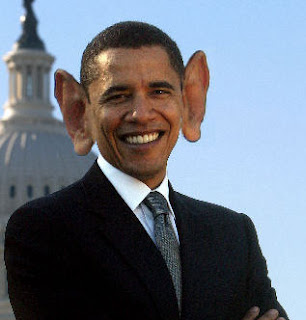Seminar Nasional Pendidikan
“Mengukir Kembali Makna Kebangkitan Nasional Dalam Pendidikan”


DASAR PEMIKIRAN
101 Tahun sudah hari Kebangkitan Nasional diperingati dengan sesuatu yang sifatnya seremonial belaka, usaha-usaha perbaikan di berbagai sektor belum memperlihatkan perbaikan yang signifikan, hasilnya bangsa ini masih belum mampu bangkit dari keterpurukan yang selama ini membelenggu. Kemiskinan, kelaparan, kebodohan serta berbagai pemandangan yang memprihatinkan seolah tidak pernah lepas dari potret masyarakat negeri ini.
Dalam bidang pendidikan 101 tahun hari kebangkitan nasional memiliki makna yang mendalam dimana 101 tahun yang lalu Budi Utomo membawakan setitik cahaya ditengah kegelapan bangsa ini yang terbodohkan akibat penjajahan yang begitu panjang oleh kaum penjajah, sejak saat itulah tekad untuk bangkit dari keterpurukan terhujam dalam jiwa setiap anak bangsa negeri ini. Hal tersebut merupakan salah satu gambaran bahwa pendidikan merupakan sektor yang sangat menentukan untuk menuju kebangkitan suatu bangsa dari keterpurukan akibat semua bentuk keterjajahan. Banyak contoh yang bisa kita jadikan cerminan dimana sektor pendidikan memiliki kontribusi besar dalam kebangkitan suatu bangsa, Negara Jepang dapat bangkit dari keterpurukan akibat di bom atom oleh sekutu, akhirnya bisa bangkit serta maju seperti saat ini. Salah satu penyebabnya adalah begitu perhatiannya pemimpin saat itu untuk mengutamakan sektor pendidikan sebagai Leading Sektor dalam usaha untuk membangkitkan sebuah bangsa dari keterpurukan.
Sektor pendidikan seolah luput dari perhatian para pemegang kebijakan di negeri ini, yang seharusnya mendapatkan perhatian yang baik dari para pemegang kebijakan di negeri ini. Dimulai dari anggaran pendidikan yang sampai saat ini belum sesuai dengan konstitusi, kesejahteraan guru yang belum terperhatikan, banyaknya angka putus sekolah, belum meratanya sarana dan prasarana yang menunjang, sulitnya pendidikan diakses secara merata oleh seluruh masyarakat hingga permasalahan seringkalinya kebijakan-kebijakan para pemimpin bangsa ini yang justru menjadikan terhambatnya perkembangan sektor pendidikan di negara ini.
Potret yang memprihatinkan yang telah digambarkan di atas bukan untuk mengarahkan pada sebuah pesimisme dari sebuah perjuangan, namun diharapkan bisa menjadi sebuah lecutan semangat untuk kita semua bahu membahu bangkit dari keterpurukan yang melanda negeri ini. Dari acara Seminar Nasional Pendidikan ini diharapkan bukan hanya menghasilkan terpaparkanya permasalahan yang terjadi pada sektor pendidikan namun dapat terhasilkannya sebuah solusi penyelesaian dari permasalahan-permasalahan yang ada, sehingga kita semua –Bangsa Indonesia- dapat memberikan sebuah kontribusi untuk menuju kebangkitan Indonesia dalam pendidikan.
LANDASAN KEGIATAN
Landasan Pemikiran
Tri Dharma Perguruan Tinggi
- Pendidikan
- Penelitian
- Pengabdian
Landasan Operasional
- PP Nomor 60 Tentang Perguruan Tinggi Negeri
- KepMenDikBud RI No.155 Tentang Pedoman Umum Organisasi Kemahasiswaan di Perguruan Tinggi
- UU No. 20 Tahun 2003 Tentang Sistem Pendidikan Nasional
- UU Guru dan Dosen
- GBPK HIMAS Periode 2008-2009
- Program Kerja HIMAS Periode 2008-2009
TUJUAN DAN TARGET KEGIATAN
TUJUAN
- Merefleksikan makna Kebangkitan Nasional dalam membangkitkan pendidikan nasional
- Mengetahui serta memahami permasalahan-permasalahan sektor pendidikan nasional
- Menyatukan persepsi dari elemen-elemen yang fokus terhadap permasalahan pendidikan untuk bersama-sama bergerak dalam mengontrol kebijakan-kebijakan pemerintah untuk sektor pendidikan
- Memberikan pemahaman kepada khalayak umum mengenai kebijakan pemerintah dalam hal implementasi anggaran pendidikan 20 %.
TARGET
- Terpaparkannya permasalahan-permasalahan faktual dalam sektor pendidikan nasional
- Dari pemaparan yang telah dilakukan peserta diharapkan memiliki penilaian terhadap kondisi sektor pendidikan nasional saat ini

NAMA KEGIATAN
SEMINAR NASIONAL PENDIDIKAN
TEMA KEGIATAN
Tema dari kegiatan ini adalah:
“Mengukir Kembali Makna Kebangkitan Nasional Dalam Pendidikan”
SASARAN KEGIATAN
- Mahasiswa UPI
- Guru se-Jawa Barat dan luar Jawa Barat
- Elemen-elemen pemerhati pendidikan
WAKTU DAN TEMPAT
Waktu : 14 Mei 2009
Tempat : Balai Pertemuan Umum (BPU) UPI
AGENDA ACARA SEMINAR NASIONAL
“Mengukir Kembali Makna Kebangkitan Nasional Dalam Pendidikan”
Kamis, 14 Mei 2009
Seminar Sessi Pertama
Tema : Kebangkitan Nasional Pendidikan
1. Makna Kebangkitan Nasional Bagi Pendidikan Indonesia: Sebuah Refleksi Terhadap Mutu Pendidikan
Pemateri : Asviwarman Adam (Peneliti LIPI)
2. Upaya Pemerintah Dalam Mengaktualisasikan Makna Kebangkitan Nasional dalam Pendidikan
Pemateri : Menteri Pendidikan Nasional*
3. Realitas Mutu Pendidikan Indonesia Dewasa ini
Pemateri : DR. Yudi Krisnandi ME (Anggota DPR RI)
Seminar Sessi Kedua
Tema : Implementasi Anggaran Pendidikan 20% antara Harapan dan Tantangan
1. Implementasi Anggaran Pendidikan 20% untuk Meningkatkan mutu Pendidikan
Pemateri :Dirjen Dikdasmen*
2. Inovasi Pembelajaran Sebagai Tuntutan Bagi Guru Terhadap Realisasi Anggaran Pendidikan 20%
Pemateri : Dr. Dadang Supardan, M.Pd.
3. Realitas Implementasi Anggaran Pendidikan 20% Antara Harapan dan Tuntutan
Pemateri : Suparman (Ketua FGII)
Biaya pendaptaran peserta:
Mahasiswa UPI Rp 50.000/orang
Mahasiswa luar UPI Rp 75.000/orang
Umum Rp 100.000/orang
KETERANGAN
1. Untuk pembayaran dapat dilakukan melalui :
BNI Cabang UPI
Jalan Dr. Setiabudi 229 Bandung 40154
No Rekening 0119283790 a.n Nuri Pramita Widya
2. Untuk informasi lebih lanjut dapat menghubungi
Sekretariat SEMINAR NASIONAL PENDIDIKAN
Gedung Olahraga (Gedor) UPI
Jl. Setiabudhi 229 Bandung 40154
Cp : 08172388986 (Deny) - 085659355663 (M. Sobar) – 085724062490 (Asep)
Facebook: rastulang@yahoo.com

























